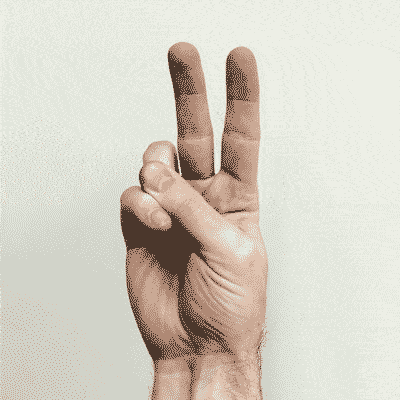The apostrophe (‘) and quotation mark (“) are a set of the few English punctuation marks which look very similar but function in different ways. (I’m looking at you, colon and semi-colon!) Perhaps these two marks have given you trouble, perhaps not. But I bet you’re curious about how they’re different, why else would you be here?
The main difference between the two is:
- Quotation marks are used to report speech.
- An apostrophe is used for making contractions and possession.
It’s not likely you’ll mix them up, but keep in mind, apostrophes appear alone and quotation marks appear in twos!
Apostrophes
You see the apostrophe being used in many places. You use them most commonly when you need to create a possessive noun, or when you create a contraction (two words smooshed together into one). Let’s look at a few examples:
Possession
- the cat + his favourite toy = the cat’s toy
- a man + his motorcycle = a man’s motorcycle
- the sky + blue = the sky’s colour
In most cases, when you want to indicate that something belongs to a person, place, or thing, you attach an apostrophe and an “s” to the word to show possession.
Contractions
- is + not = isn’t
- can + not = can’t
- you + will = you’ll
- it + is = it’s
- they + have = they’ve
Contractions happen when you smash two words together into one and lose some letters in the process. The apostrophe tells you that some of the letters are missing. Most of the time, it’s only one letter, but sometimes you’ll find that two letters are missing. (you’ll)
But I’ve seen apostrophes used as quotation marks!
Alas, some rules were made to be broken. Much like how poets sometimes ignore grammar in poetry, artist too often ignore them in art. That’s right, words can be art too! In graphic design, you’ll sometimes see artists using apostrophes as quotation marks.
This is wrong. But it can also look good! The concerns of artists isn’t to be grammatically correct; they want to create visually appealing works. So sometimes they take liberties with English grammar to achieve that goal.
In academic writing, however, you won’t find writers using apostrophes in this way. If you did, we would have grammatical anarchy! Dogs and cats living together, mass hysteria!
Quotation marks
The quotation mark is used when you report speech, that is to say when you are quoting someone. Take a look, it’s right in the name, quotation mark! Here are some examples:
- “What time is dinner ready?” He asked.
- She said, “I don’t have time to make spaghetti tonight.”
- “I thought you were free tonight,” He said, “I can’t make dinner either.”
The quotation mark always shows up in twos. The first one signals the start of the quote, while the second one lets you know that the quote has ended. If you have trouble remembering, think about when someone quotes another person while speaking. Usually, they’ll begin by saying, “quote” before continuing with the quote and ending by saying, “end quote”.
You’ll also frequently see people using their fingers to mimic quotation marks. Usually, this is a sarcastic gesture. People do it when they say one word, but they mean something else.

Photo by Dronthego – Own work, CC BY-SA 4.0, Link
Did you notice how even when you mimic the quotation mark with your hands, there are two of them? It’s just like I told you above, quotation marks always come in twos!
Quotception
What about when there is a quote within a quote? For example, what if you wanted to write about what Bill said that Susan said? You would have to use quotation marks, wouldn’t you?
Now, what if I told you that when you need to quote inside of a quote, that the quotation mark looks like this ( ‘ )? I can already hear you saying, “But Kyle! That isn’t a quotation mark at all! That’s an apostrophe.” I can agree that it looks like an apostrophe, sure. However, that isn’t an apostrophe. It’s a quotation mark. Let’s take a look:
It would be a confusing mess if we used double quotation marks to quote a second quote inside of another quote.
![]() Bill said, “Can you believe that Susan told me to, “Eat lasagna instead.” After I already picked the cat up from daycare?”
Bill said, “Can you believe that Susan told me to, “Eat lasagna instead.” After I already picked the cat up from daycare?”
Where does the first quote stop? Where does the second one begin? I don’t know! That might as well be nonsense. Let’s fix it up:
 Bill said, “Can you believe that Susan told me to, ‘Eat lasagna instead.’ After I already picked the cat up from daycare?”
Bill said, “Can you believe that Susan told me to, ‘Eat lasagna instead.’ After I already picked the cat up from daycare?”
That looks a lot better and it’s easier to read too! Since we need some way to tell the difference between the two quotes, we need a punctuation mark that looks different from our regular double quotation marks. So even though the apostrophe and the single quotation mark look the same, they are actually different.
It’s similar to words that look the same in English but have different meanings. Such as the word “bat”. This can be a small, furry mammal who can fly, or it could be a long wooden stick you use to hit a baseball. The word looks exactly the same, though! It’s the same with the apostrophe and the single quotation mark.
The single quotation mark only appears inside of double quotation marks. Its function is exactly the same as the double quotation marks, except they only appear inside of another quote.
A very special single quotation use.
Sometimes in specialized fields, such as in linguistics, psychology, or philosophy. You’ll be talking about very abstract things. So sometimes, you’ll need to make up words to call those things. In cases like these, you will use a set of single quotation marks to introduce the new word or ‘jargon’.
Did you see what I did there? That’s how it’s typically done. A short description of the word will be written before the word itself is written surrounded by single quotation marks.
Conclusion
There you have it, a quick primer on everything you need to know about apostrophes and quotation marks. Did you learn anything new? Their uses are fairly straight forward, so you probably won’t find yourself making many mistakes when using them. If you do, be sure to come back and read this article again!
Happy studying!



